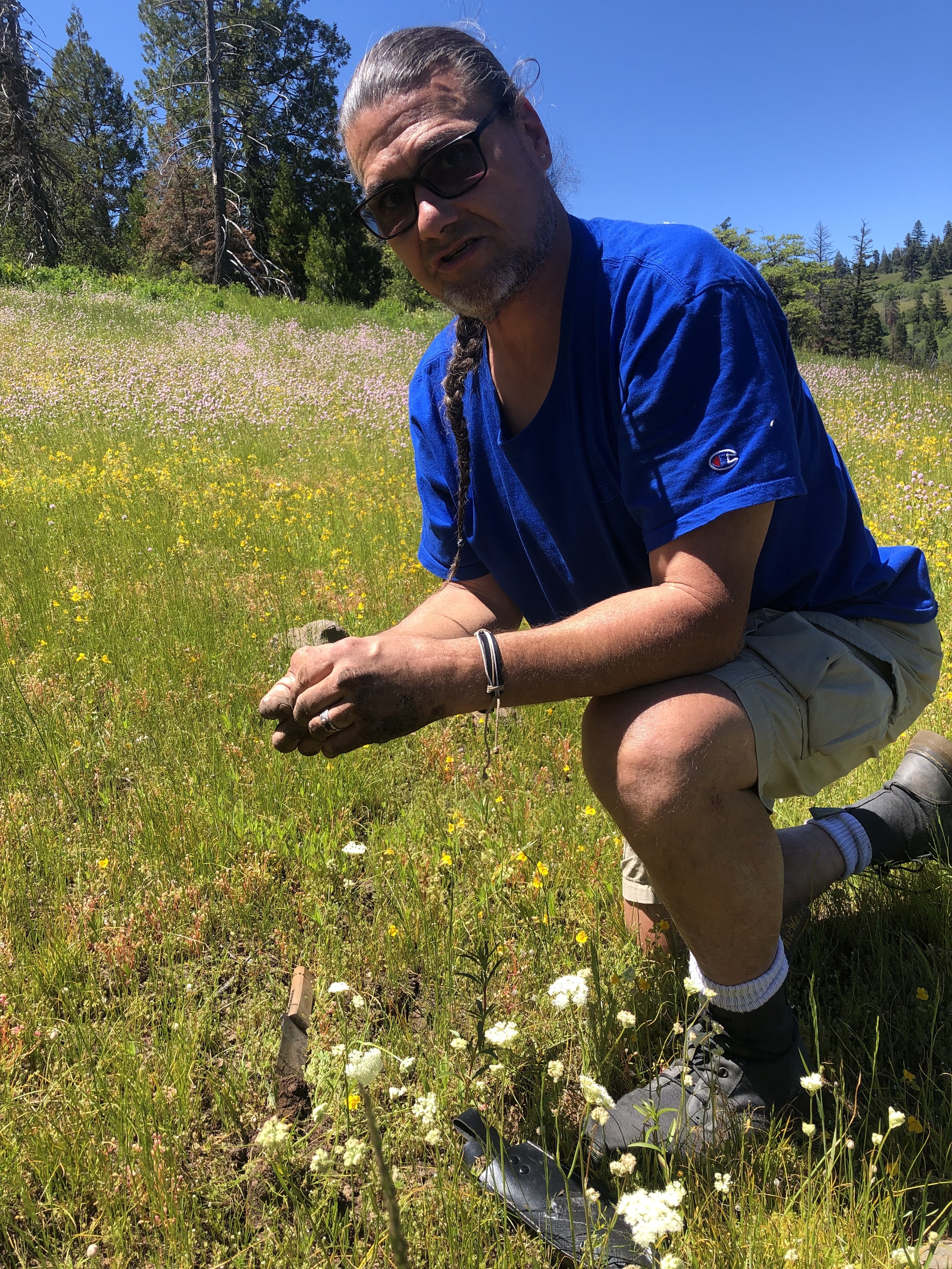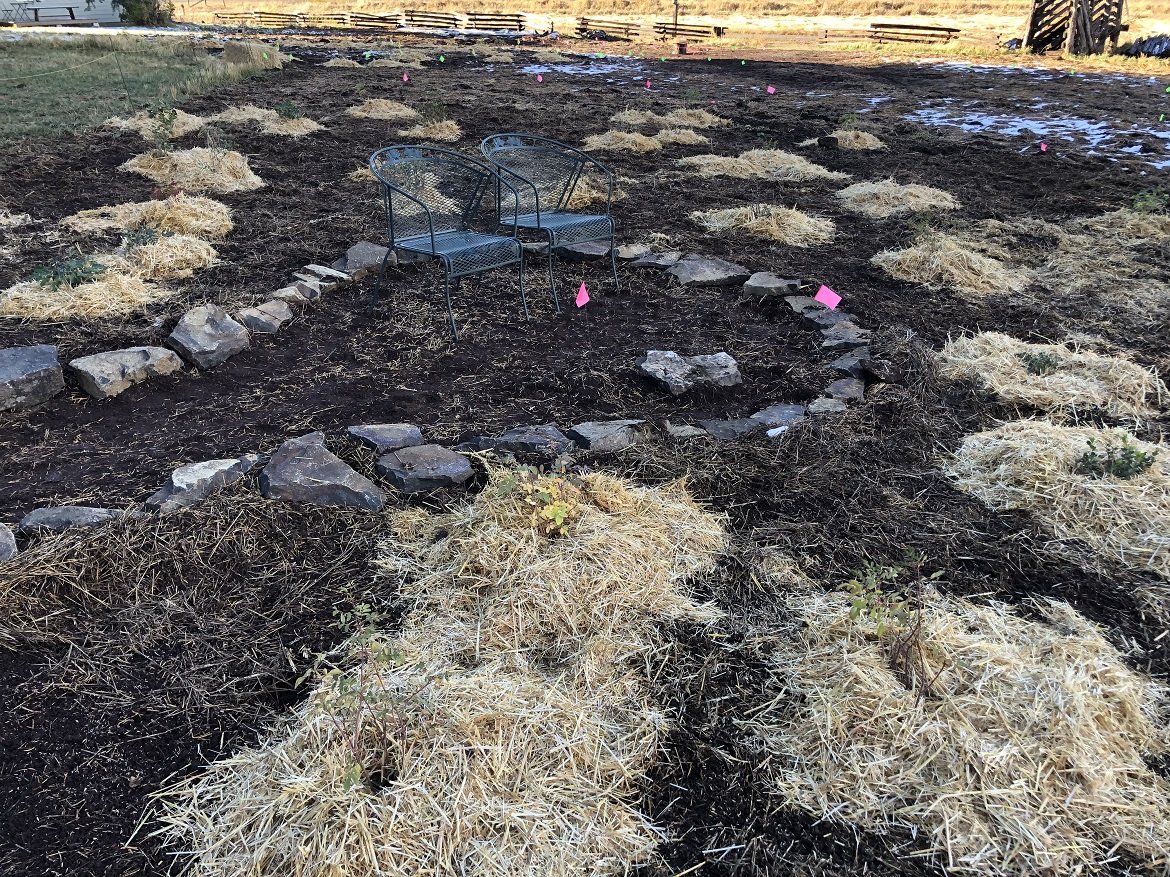Indigenous Gardens Network
What is the Indigenous Gardens Network?
The Indigenous Gardens Network (IGN) serves as a hub of collaborative, Indigenous-led land projects that aim to restore traditional gathering areas throughout Southwestern Oregon (SWO) so that First Foods and plants of cultural significance can be cultivated, harvested, and made accessible to Indigenous partners. The IGN mobilizes new and existing resources in innovative ways to create project-based and experiential learning opportunities that address the urgent issues of food security, climate change, and Indigenous food sovereignty. The project represents a regional partnership that brings diverse partners together (Tribes, educators, conservation organizations) to address barriers to First Food access and cultivation.
The IGN is re-connecting and re-establishing First Foods, Medicines, and Fibers landscapes in SWO and engaging SWO partners in supporting Tribal access to – and stewardship of – critical cultural resources. The IGN supports Grand Ronde and Siletz in building sustainable food systems that improve well-being, strengthen food security, and increase their control over Native agriculture and food networks. The IGN addresses barriers by: 1. Centering Native peoples with a clear understanding of accountability to them; 2. Providing technical and facilitation support 3. Collaborative & empowerment research designed with Tribal partners; and 4. Cross-organization partnerships that break down barriers between organizations and Tribes to build partnerships that address issues of access, use, and management of First Foods, Medicines, and Fibers resources. Read the IGN Press Release, December 2020
“The Indigenous Gardens Network has allowed our two Tribes (the Confederated Tribes of Grand Ronde and Confederated Tribes of Siletz) to come together in a way that hasn’t happened in a long time due to forced removal and genocide.
”
The IGN holds ten meetings (approx. once monthly), responds to funding opportunities and contracts Native Traditional Ecological Knowledge (TEK) practitioners to identify restoration needs; facilitates working groups, including: IGN Governance, Language, Events, & Cultural Landscapes; a Vesper Meadow First Foods Stewardship Plan; Shasta Takelma Learning Garden development at SOU; and a Bureau of Land Management partnership. The IGN aims to host SWO partner organization professional learning community meetings, host First Foods gatherings, and support Indigenous practices of ceremony, story, creativity, and kinship.
Why is the IGN significant?
pictured: Camas at Vesper Meadow
A history of genocide, forced treaties, and removal from homelands has created a pervasive, detrimental legacy for Native peoples, many of whom remain displaced from SWO. Tribes from the region were forcibly relocated to the Siletz reservation and Grand Ronde reservation during the mid-1800s, and descendants are citizens of the Grand Ronde Tribe and Siletz Tribe. Some members of these Tribes have not had many opportunities to engage in annual food-tending practices of their ancestors for reasons including: lack of access to public and private land, scarcity of financial and human resources, concerns over safety and prejudice, the divergence between Indigenous and Western perceptions of land use, and the degradation of Indigenous gardens caused by ranching, wineries, cannabis/hemp, farming, and other industries.
In many ways, it's the perfect timing for the establishment of the IGN. With the growth of private land conservation and awareness of Indigenous issues in Southwest Oregon, there is a big potential to bring people together for restorative work. One of the greatest potentials for this work—two centuries after the Native people of Southwest Oregon were forcibly removed from their homelands—is to simultaneously redirect the course of social justice and restore native ecosystems in the region.
“The healing that happens, that needs to happen - sometimes before ‘the work’ takes place. One of the wonderful things about our IGN meetings is the relationships we have built; learning from each other provides teaching to our communities. Thinking about the best way to plan IGN events and offer the best opportunities for our communities to connect - not only to the teachings but especially to each other.”
Who is the Indigenous gardens network?
A partnership between the Confederated Tribes of Siletz Indians (CTSI) of Oregon, Confederated Tribes of Grand Ronde (CTGR), Southern Oregon University (SOU), Vesper Meadow Education Program, and other regional partners received funding from the Oregon Cultural Trust to initiate the Indigenous Gardens Network. Both the CTSI and CTGR encompass the Tribes of people specific to the Rogue Valley region of Southwest Oregon (as evidenced by Treaties, ceded lands, and other historical records).
Meet the Tribes:
How is Vesper Meadow Involved?
Vesper Meadow with Wyethia/Mule’s Ear (yellow blooms), a native perennial sunflower.
We provide fundraising and logistical support for the Indigenous Gardens Network (IGN) and for trips to Southwest Oregon by IGN partners living elsewhere. The Vesper Meadow Restoration Preserve serves as a safe space for culturally specific activities and project-based access for IGN members.
Since 2019, we have worked with the Native Studies Department at SOU to envision and support the development of the IGN. In the winter and spring of 2020/ 2021 we engaged in regular listening sessions with Grand Ronde and Siletz Tribal members to collectively develop the vision and structure of this Indigneous-led network.
IGN members initiate mapping of culturally significant plants at Vesper Meadow Restoration Preserve.
IGN member and citizen of the Confederated Tribes of Siletz Indians, Joe Scott samples Camas lily bulbs.
During the summer 2021, Vesper Meadow began IGN project collaboration as the first pilot site for IGN, supporting Indigenous partners in the creation, leadership, and implementation of native plant restoration plans. Vesper Meadow and IGN members created The First Food Stewardship Plan, a living document to guide the Tribally-led restoration of culturally significant plants at Vesper Meadow Restoration Preserve.
In 2022, IGN members began to implement monitoring of cultural plants and build deeper relationships with the Vesper Meadow Restoration Preserve, plants, and community. During the spring, IGN members began mapping populations of culturally significant plants and qualitatively examining plant growth. Supporting IGN partners at Southern Oregon University began related studies, including camas bulb toxicity testing by Dr. Arielle Halpern. SOU Capstone students have offered support by building two raised beds for Camas in the Native Demonstration Garden; having raised beds makes digging and planting more accessible to elders.
Tribal-led Transformation for First Foods
After a century of cattle grazing and timber extraction, the land now called Vesper Meadow was in need of some love - what is now Latgawa Creek was suffering from the loss of soil-retaining plants like Willow, Dogwood, and native grasses. With the creek incising itself in the floodplain down to the bedrock, the meadow was becoming drier and less able to sustain water-loving plants like Camas lily.
There large areas where Camas lily was present when Vesper Meadow Restoration Preserve was established. With the support from partners such as The US Fish and Wildlife Service, Jackson County Soil and Water Conservation District, Oregon Watershed Enhancement Board, and The Beaver Coalition, we restoring an ecosystem where Camas will once again thrive. Members from the IGN have defined two project areas for Camas, one by the barn and one out in the larger meadow. Research will be undertaken, to see what sort of management techniques help Camas to thrive - the majority of those techniques being ones that Shasta, Takelma, and Latgawa people have been using to tend the land since time immemorial.
Once a cattle corral…
nonnative livestock grasses have been suppressed with agricultural tarps
Now the beginnings of a Native Food Garden
Walking paths with Oregon Grape, Elderberry, Hazel, Currant, Serviceberry, Thimbleberry, Kinnikinic, Native Roses, natives grasses like Tufted Hair grass, and a demonstration area for Camas to bloom and be harvested by Tribal members.
How can I support the IGN?
At this time, the structure and programs of the IGN are still being designed by members of the Grand Ronde and Siletz Tribes. There may be more ways to engage in the resulting projects in the future, but support from non-native community members is welcomed currently through:
Signing up to volunteer and engage in restoration of First Foods and other land stewardship projects at Vesper Meadow that have been directed or approved by IGN members.
Familiarize yourself with the “Nine Essential Understandings” of Native Americans in Oregon
Learn about SWO Tribes and Tribal histories, as described by Tribes themselves (links in the “Meet the Tribes” section, above)

![IMG_7551[1].JPG](https://images.squarespace-cdn.com/content/v1/5c46226e3c3a53c04e221c56/1621486699347-8ICQ7CDJRVG8GIDRMJ6C/IMG_7551%5B1%5D.JPG)








